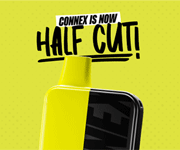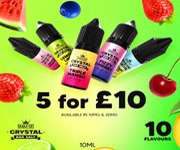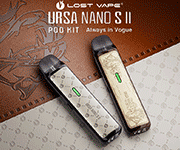Today's Guardian

The first time Hannah got an email from her son’s school to say he had been caught vaping, and that she was to collect his confiscated vape, he had just turned 14. Hannah thinks Josh, now 16, started vaping mainly because his friends did it. One friend had been excluded from his previous school for vaping THC, the main psychoactive component in cannabis.
“I used to find vapes in his bedroom, in his bed – he’s rubbish at hiding things,” she says. “I had a drawer full of his old vapes because I just used to take them.” She gave up after a while. Hannah and her husband would sometimes find the back door open at 2am because he had gone out to vape and forgotten to close it.
She has been called into school five or six times now because he has been caught vaping in the toilets. “I’m just sorry for the trouble it causes them. It’s an enormous problem and schools have so much to do. They have to be, more than ever, another arm of social services. It’s a mess – and schools are just expected to mop it up.”
Does she consider Josh to be addicted? “Massively. He’s a nicotine addict, it’s that simple. We went for a day out a few weeks ago and he was really embarrassed, but he said: ‘Mum, I can’t go any longer, I really need to have a vape.’” She has tried to help him give up, “but it’s like trying to put the brakes on a massive ship; it will take a while”.
Last week, he ran out of vape fluid. “Because he’s doing his GCSEs and he was really struggling, I said: ‘I’m going to do this once and once only.’ I bought him a disposable vape, which I couldn’t disapprove of more, thinking that will keep him going. He’d smoked it within half a day. I Googled how long they’re meant to last – up to five days. That’s making me worry that his addiction is worse than I thought.”
Mark says that his 15-year-old daughter, Helen, who has been vaping for a year or so, has developed a smoker’s cough: “That does worry me, because it’s not smoke [in the vape], so what’s in it that’s causing that?” He has tried to get her to stop. “At the moment, we’re sitting back because she’s doing GCSEs. We do want her to give up, but we will wait, because we don’t want the added stress.
“We operate by trying to be extremely honest about things, so she’s not hiding it, because to start with we found them being hidden under pillows and stuff.”
Now, he says, “she ends up spending any allowance she gets on vapes.” He sends a picture of a “haul” of more than 20 vapes she got through in about four weeks. He has also found vapes that contain illegally high levels of nicotine. Last month, the BBC found that illegal vapes confiscated at a school in Kidderminster had
high levels of metals, including more than twice the safe level of lead, nearly 10 times the safe level of nickel and high levels of toxic formaldehyde.
Vapes seem to be everywhere among Helen’s group of friends, says Mark. “If somebody buys one and doesn’t like the flavour, they pass it on to someone else, so there’s this circuit,” he says. “If they bring out a new flavour, they think: I’ll get one of those. It’s like swapping football stickers in the playground. The local newsagents sell them to kids in school uniform – they know very well they are not 18. I believe the local vape shop also sells to them.”
Last week, the Royal College of Paediatrics and Child Health (RCPCH) said
disposable vapes should be banned because of their popularity among children and young people, partly thanks to their bright colours, sweet flavours and low prices.
New Zealand has banned most disposable vapes, as well as the sale of vapes in shops within 300 metres of schools. “It took decades to understand the relationship of cigarette smoking to cancer and respiratory illnesses – my worry is we could be sleepwalking into a similar situation here,” said Dr Mike McKean, the vice-president of the RCPCH and a paediatric respiratory consultant.
“If you inhale potentially noxious, volatile substances, there is a huge potential for an inflammatory reaction that could have a minor or a major effect. There is lots of evidence it causes significant coughing and breathlessness. We’re not seeing lots of highly damaged lungs yet, but there are cases reported where the inflammatory response is overwhelming and causes permanent scarring.”
The RCPCH was responding to a government call for evidence, which closed last week, prompted by the rise in youth vaping. According to NHS Digital,
one in five 15-year-olds vaped in 2021; the current figure is expected to be higher.
Last month, the annual survey by Action on Smoking and Health (Ash) found that, although there had been no significant increase in the proportion of 11- to 17-year-olds vaping, there had been
a 50% increase in those trying vapes. According to the survey, 7.6% of children vape, with disposables the most-used vapes.
Many parents of teens who vape feel the official figures are too low. “I reckon that, from what my daughter says, 90% of her school year vape,” says Mark.
Julia, who has a 14-year-old, Phoebe, says that, of her daughter’s friends, “maybe 70% vape. It is a massive problem.” She has seen the age of first use drop. Her son, who is almost 18, started when he was about 15. “He says his sister’s generation were vaping much earlier. They’ve probably been vaping since they went to secondary school, in year seven. I would say it’s endemic. I asked my daughter how they get them. She said that it was really easy for a long time, so 11- or 12-year-old girls could go in shops and just get vapes. Apparently, it’s harder now, so they just ask somebody on the street [to buy them].”
According to Ash, nearly three-quarters of children who vape buy vapes themselves, despite it being illegal to sell them to under-18s.
Julia has tried to stop her children and their friends vaping in the house, “but that’s a losing battle”. She has tried talking to them about it, too. “I say: ‘It’s your body and I can’t stop you from doing it, but I just need you to understand that you’ve only got one body, you’ve only got one set of lungs,’” she says. “But at that age they don’t have any real understanding of what they’re doing. They have a vape that is [equivalent to] 28 cigarettes, but they smoke it in a day.
“We feel, with social media and tech and now vaping, really abandoned by the government and legislation, because there’s nothing we can do to stop it. All we can do is acknowledge that it’s happening and give them the information. But, of course, there’s very little data about vapes and how it’s affecting young people. We’re left having to do our best to educate them with nothing in place to stop it happening.”
In 2015, Rosey Christoffersen, who was 18 and a talented footballer, died. Her lungs had collapsed. Her family believes it was due to vaping. “There needs to be massive research into this,”
said Rosey’s mother, Rachel Howe, last year. “In the meantime, they should be treated like tobacco and only sold from a closed cabinet behind a counter.”
Public health experts are wary of demonising vapes, which are
a proven smoking-cessation aid. The Ash survey also highlighted a growing misconception among children and adults that vaping is as harmful, or more harmful, than smoking, saying there was a risk that people might think they could smoke instead.
A 2015 review published by Public Health England estimated that vaping was 95% safer than smoking. Youth smoking has declined. This year, Chris Whitty, England’s chief medical officer, said vaping “
has an important role as a public health tool to help smokers … come off smoking”. He added that it was “utterly unacceptable” to market it to children. Last month,
the Australian government said it would make vapes prescription-only and ban disposable vapes.
Young people are getting mixed messages, says Mira Osinibi, a paediatric respiratory specialist nurse who also runs a company,
MiraOLungHealth, that goes into schools to talk about vaping. “They hear it’s 95% safer [than smoking tobacco],” says Osinibi, but she questions whether this is accurate for young people. “We know that children’s lungs are not the same as adults’ lungs. There has to be more research about how damaging it is. But we already know that nicotine is not good for the adolescent brain.” She also thinks the official data on the number of young vapers is lower than in reality.
She finds that most young people don’t understand the level of nicotine (not all vapes contain it), or the potential effect of vaping on their lungs. “They’re getting mixed messages when they go to a shop and the vape looks like a chocolate bar. It’s colourful and small.” Vapes are not sold from behind a counter, in plain packaging, like cigarettes are. “So they’re confused. They go: ‘What’s the big deal?’” Unlike cigarettes, the taste of which puts off many experimental young smokers, some vape flavours mimic sweets or soft drinks.
Also unlike cigarettes, disposable vapes are discreet – and much less easily detected by parents. “Some have it in their hand all the time, so they might vape when they go to school, they might vape in the toilet,” she adds. “Some parents, when I speak to them at schools, don’t know how long their children have been vaping. You wouldn’t have that with tobacco.”
Osinibi says vapes, particularly the disposable kind, “do not need to be as colourful as they are; they don’t have to be as small as possible. Adolescents love that, because they can hide it. Adults don’t need to hide it. That’s why I don’t believe it when the vaping industry says ‘we are not designing for children’.”
Andrew, an assistant headteacher at a school in south-west England, has seen the age of vaping children get younger in the past three or four years. “There’s much more attraction to them for younger students – the colours, the flavours. All of that is aimed at those who are a bit more impressionable,” he says. Some students vape at school, but it is hard to catch, “especially when the smell is indistinguishable from perfume or deodorant”. The toilets are the most common area for vaping. “They have to be monitored, so obviously there’s a use of resources for the school and the knock-on impacts of that. You get younger students not wanting to use toilets because older students are congregating there.”
1.3m single-use vapes are thrown away each week, leaving a considerable environmental footprint.
It was common for students to arrange meet-ups in the toilets with others in different classes 10 minutes into lessons, he says. This led to his school, and many others, banning toilet breaks during lessons, which has been widely criticised. “But you’re constantly fighting that battle,” he says.
Many parents are angry about this, including those who know their children are vaping. “It makes me so mad this is happening. What about girls [who may be on their period]? There are loads of kids with additional needs who need to go to the toilet,” says Hannah. Her son, Josh, was given a toilet pass on mental health grounds – he is awaiting an assessment for autism and the school toilets had become a place of peace for him when he was feeling overwhelmed. “Then they took it off him, because they kept catching him vaping.”
https://www.theguardian.com/society...om-what-my-daughter-says-90-of-her-year-do-it



















